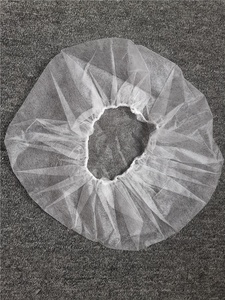
Beauty Salon Food Industry Blue Pink PP Non Woven Mob Cap Single Double Elastic Disposable Bouffant Clip Cap

Disposable Hairnet Mesh Spunbond Bouffant PP Nonwoven Hair Net Isolation Elastic Dustproof Mesh Mob Cap











The disposable bouffant cap is a staple in environments where sterility and hygiene are paramount. Designed to provide full hair coverage, these caps are essential in medical settings, laboratories, and food service industries. The bouffant cap's primary function is to prevent hair and other particulates from contaminating clean areas, making them a critical component in maintaining sanitary conditions.
Bouffant disposable caps come in various materials, with non-woven fabric being the most prevalent due to its effective barrier properties and breathability. Polypropylene (PP) is commonly used for its balance of filtration efficiency and comfort. The caps are available in multiple colors, with blue bouffant caps and white bouffant caps being the most common in professional settings, allowing for quick visual identification in compliance with different institutional protocols.
While often associated with the medical field as surgical bouffant caps, these versatile caps are also integral in other sectors. In the food industry, bouffant hair nets are used to uphold food safety standards, whereas in manufacturing, they serve to protect products from human contamination. The simplicity of the bouffant cap surgical model also makes it suitable for use in cleanrooms and pharmaceutical environments.
The design of bouffant caps medical ensures a snug fit to accommodate a range of hair volumes, enhancing comfort for extended wear. The elastic band around the rim secures the cap without causing pressure or discomfort. The lightweight nature of a non woven cap adds to the comfort, reducing the burden on the wearer during long procedures or shifts.
Medical bouffant caps adhere to various standards to ensure safety and efficacy. Certifications such as ISO13485 and standards like GB15979-2002 are benchmarks for quality in the production of these caps, ensuring they meet the rigorous demands of healthcare and other industries. Buyers can find products with different certifications to meet their specific compliance requirements.
Selecting the appropriate bouffant hair cap involves considering the intended application, the required certifications, and material preferences. For instance, a nurse bouffant cap may prioritize comfort and fit for long-wearing periods, while a surgery bouffant cap might focus more on sterility and compliance with medical standards. It is essential to assess the specific needs of the environment to ensure the selected cap provides adequate protection and functionality.